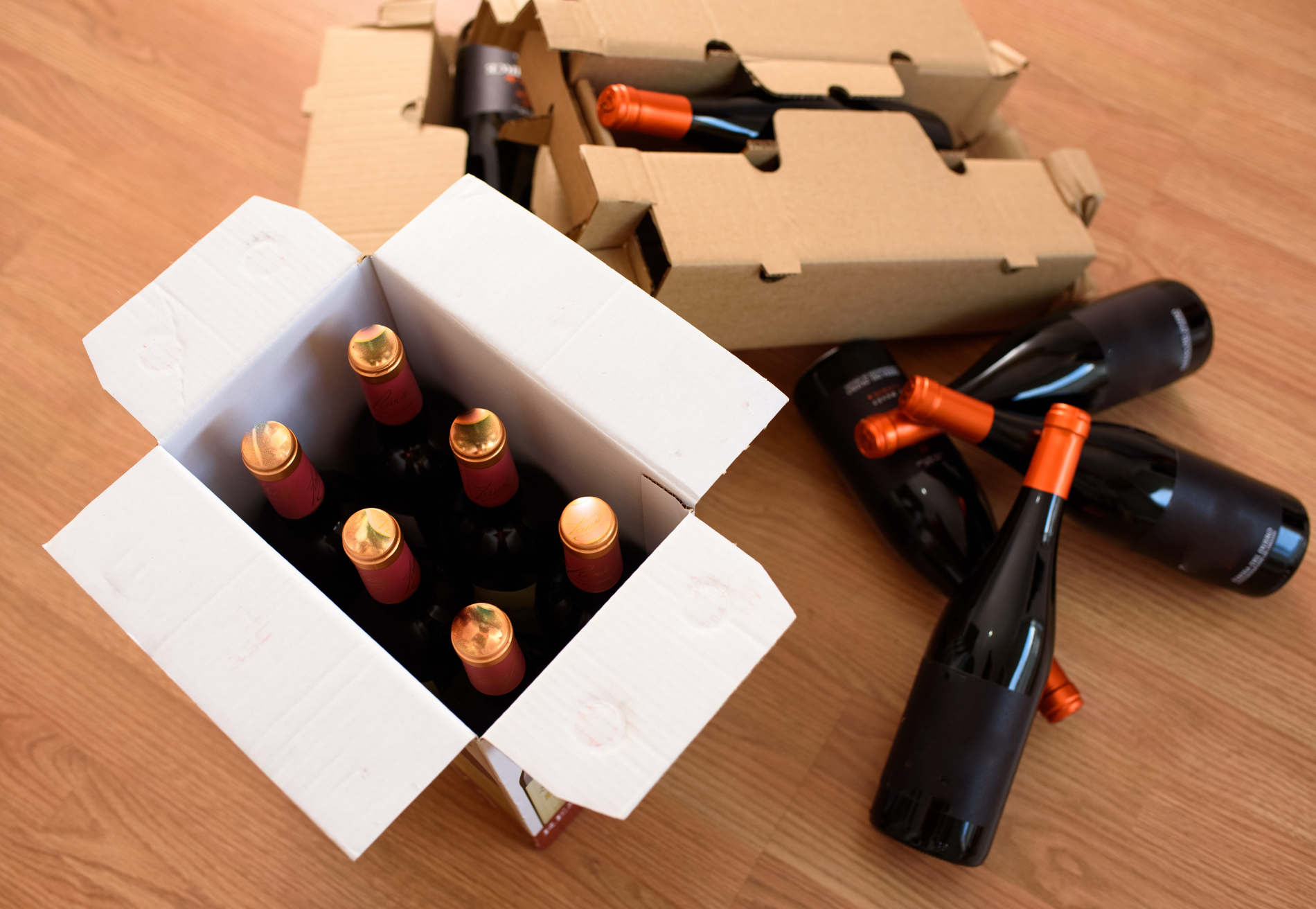Maximizing Restaurant Delivery Efficiency: The Last-Mile Delivery KPIs

Timely and efficient deliveries are paramount to satisfy customer demands. This article explores the world of Last-mile delivery KPIs (Key Performance Indicators) and why they are essential for restaurant owners and managers. We will also discuss how using Shipday can revolutionize your last-mile delivery process.
What is last-mile delivery?
Last-mile delivery is the crucial last step in the delivery process, where goods are transported from a distribution center to the customer's doorstep. It's the most customer-facing part of the delivery journey, making it a make-or-break stage for restaurants.
Why do last-mile delivery KPIs matter?
Several reasons exist to use KPIs for last-mile delivery, both for your customers and your business. Here are some of the benefits you can expect when you benchmark your deliveries with KPIs to keep your business moving in the right direction:
Ways KPIs benefit customers
Customer satisfaction is a paramount goal for any restaurant delivery service. KPIs play a pivotal role in achieving this objective. Customers are looking for deliveries that are on time, accurate, and exactly what they ordered. KPIs can benefit the customer experience, allowing for a seamless transaction of goods from business to curbside.
Here we discuss some of these benefits at length:
- On-Time Deliveries: On-time deliveries are essential for meeting customer expectations and maintaining high customer satisfaction rates. Delays can result in customer dissatisfaction, potentially leading to negative reviews and lost business. It's crucial to ensure deliveries reach customers as promised to build trust and loyalty in a competitive market.
- Accurate Orders: Accurate orders play a vital role in satisfying customers. When orders are correct, customers are more likely to have a positive experience. Inaccurate orders not only lead to customer dissatisfaction but can also result in costly returns, refunds, and potentially a damaged reputation for your restaurant.
- Damage Claims: Minimizing damage claims is not only a financial concern but also a matter of upholding your restaurant's reputation. High levels of damage claims can lead to financial losses and a negative image in the eyes of your customers.
- Customer Satisfaction: Customer satisfaction is the ultimate goal of any restaurant delivery service. Satisfied customers are more likely to become repeat customers and recommend your restaurant to others. Measuring and improving customer satisfaction through KPIs is crucial for long-term success.
Ways KPIs benefit costs and resources
Efficiency in last-mile delivery operations is essential for minimizing costs and maximizing resources. Having delivery KPIs allows businesses to reduce their fuel consumption, cost per mile, and delivery times.
Operations benefits include the following:
- Cost per Mile: Managing the cost per mile is essential for optimizing the efficiency of your last-mile delivery operations. It directly impacts your operational expenses and profit margins. Reducing fuel costs and optimizing delivery routes can lead to significant cost savings and increased profitability.
- Fuel Consumption Rate (FTR): Monitoring fuel consumption is not only about cost but also environmental responsibility. A lower fuel consumption rate helps reduce operational costs and minimizes the carbon footprint of your deliveries. It's an important KPI for eco-conscious businesses.
- Capacity Utilization: Efficiently managing the capacity of your delivery vehicles is crucial for reducing operational expenses, including fuel costs. Optimizing vehicle capacity ensures that you are making the most of your resources and minimizing costs related to vehicle usage.
- Average Service Time (AST): Quick and efficient service directly affects the number of deliveries you can complete in a day. Faster service means more satisfied customers and potentially more revenue. Measuring and improving AST can lead to a more productive delivery operation.
Important KPIs for delivery
There are several KPIs businesses can use to monitor and improve their delivery services. By intentionally measuring and looking at the data they collect around these KPIs businesses then can make important decisions to optimize and streamline their operations.
Here are some suggested KPIs to implement for your business.
- Planned vs. Actual Mileage: Comparing your planned routes to your delivery drivers’ actual mileage provides valuable insights into the efficiency of your route planning. Identifying areas where planned routes differ from actual mileage can help in making informed decisions to improve the accuracy and efficiency of deliveries.
- Total Mileage: Tracking the total mileage covered by delivery vehicles is important to understand the distance traveled during the last-mile delivery process. This KPI helps in evaluating fuel efficiency and route optimization to reduce operational costs and environmental impact.
- Capacity Utilization: Capacity utilization measures how efficiently your vehicles are being used. It focuses on maximizing the capacity of delivery vehicles, ensuring that they are fully loaded, and reducing the number of partially empty trips. Efficient capacity utilization leads to lower costs and improved operational efficiency.
- Unnecessary Stoppages: Identifying unnecessary stoppages during deliveries is crucial to streamline the last-mile process. These stoppages can lead to delays, increased fuel consumption, and decreased efficiency. Minimizing unnecessary stoppages is essential for timely deliveries and cost reduction.
- Hours in Motion: Hours in motion KPI measures the time delivery vehicles spend actively in motion during the delivery process. It helps in assessing the efficiency of delivery routes, driver productivity, and overall operational effectiveness. Maximizing hours in motion leads to more deliveries and reduced idle time.
- Complaint Details: Monitoring and analyzing complaint details from customers provides valuable insights into issues they may have encountered during the delivery process. This KPI helps address specific customer concerns and improves the overall delivery experience, leading to higher customer satisfaction and loyalty.
Incorporating these KPIs into your last-mile delivery strategy can have a significant impact on the success of your restaurant delivery business. By focusing on these key metrics, you can make informed decisions, reduce operational costs, and, most importantly, keep your customers satisfied and loyal.
Strategies to optimize last-mile delivery
Knowing your data is not the same as using that data to benefit your business, however. In order for this data to improve your customer experience and operations efficiency, you need to use this data to make decisions about how to improve deliveries and start optimizing your operations.
Strategy #1: Data-driven decision-making
Leveraging data-driven insights is vital in last-mile delivery. Monitoring last-mile delivery metrics such as delivery schedules, time delivery rates, and customer satisfaction scores allows companies to make informed decisions. For instance, analyzing traffic conditions can help adjust routes in real-time to avoid delays and maintain on-time deliveries.
Strategy #2: Route optimization
Route optimization is a fundamental strategy to enhance last-mile delivery. Using route optimization software, logistics companies can plan the most efficient delivery routes, reducing the average delivery distance. This not only saves time but also minimizes fuel costs and vehicle wear and tear. Efficient routes contribute to on-time deliveries, a crucial metric for customer satisfaction and operational efficiency.
Strategy #3: Implementing Good KPIs
The path to success in restaurant delivery lies in implementing relevant KPIs and strategies. Combining data-driven decision-making, route optimization, and a commitment to timely deliveries and customer service can lead to excellence in last-mile delivery.
Understanding and leveraging crucial metrics while continuously improving operations requires a holistic approach that addresses all aspects of delivery, from route planning to customer service.
At a minimum, these metrics should include:
1. On-time deliveries
Maintaining a high on-time delivery rate is a crucial performance metric. It measures the percentage of deliveries completed within their scheduled delivery times, directly impacting customer satisfaction and the success of delivery operations.
2. Order accuracy
Order accuracy ensures that customers receive exactly what they ordered. This metric is vital to prevent costly returns or refunds and to build trust with customers.
3. Customer satisfaction
Customer satisfaction ratings reflect the overall experience with a delivery service. High satisfaction scores lead to customer loyalty and positive recommendations, while low scores can result in lost business.
4. Cost per Mile
Cost per mile is a key financial metric. It helps companies understand the average cost associated with each mile of delivery. Monitoring and reducing this cost is essential for profitability and efficient delivery operations.
Streamlining last-mile delivery with Shipday
Embracing best practices in last-mile delivery, such as on-time deliveries, order accuracy, cost control, and customer-centric service, is essential. Companies that prioritize these practices and leverage tools like Shipday can achieve excellence in the competitive last-mile delivery industry.
Shipday is a comprehensive delivery management software that streamlines last-mile delivery for restaurant owners and managers. It offers features such as route optimization, real-time tracking, and customer communication tools.
Shipday's role in enhancing KPIs
Shipday plays a pivotal role in enhancing last-mile delivery KPIs. It optimizes routes, reducing average delivery distances and improving on-time deliveries. Real-time data and insights empower data-driven decision-making.
Shipday helps reduce fuel costs, improve delivery efficiency, and boost customer satisfaction. Its ability to monitor and analyze KPIs supports operational excellence in restaurant delivery.
Using Shipday, restaurant owners can elevate the customer experience by ensuring timely and accurate deliveries. Customers receive updates on delivery status and expected delivery times, contributing to satisfaction and loyalty.
Conclusion: Embracing last-mile delivery best practices
In the competitive world of restaurant delivery, Last-Mile Delivery KPIs are your compass to navigate the last leg of the delivery journey. They empower you to make data-driven decisions, ensure efficient deliveries, and keep your customers satisfied. Combine these KPIs with the capabilities of Shipday, and your restaurant delivery operation will be on the path to success.
Try Shipday today for free today, and see how it can benefit your delivery operations.
Index
Ready to get started?
Play around with it first, add your team, pay later.








.avif)






%201.svg)
